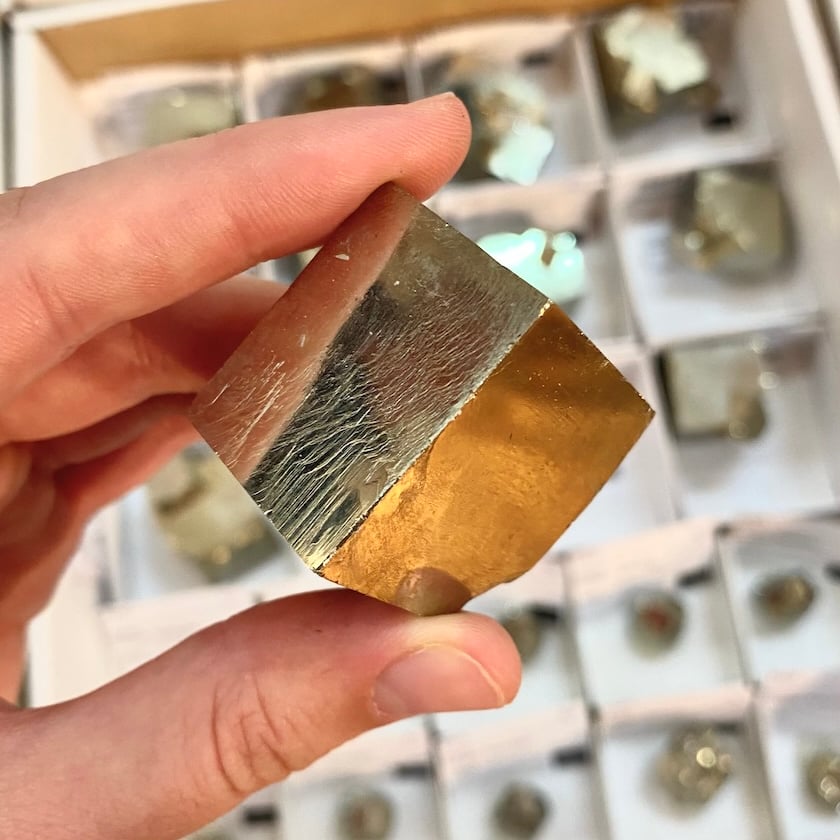Mineralogy of Sulfides and Sulfosalts
Sulfides and sulfosalts are important sources of elements crucial to modern industry. Learn how to identify these minerals.
12 Minute Read
Introduction to the Sulfides and Sulfosalts Mineral Class
The sulfides and sulfosalts mineral class has a general formula of AmXn, where A represents a metallic element (Fe, Cu, Zn, Pb, As, Sb, Mo, etc.), and X is a sulfide – an anion of sulfur (S2-). The letters m and n are simply integers. Sometimes, the A (metallic element) position can be shared between several elements, as in chalcopyrite (CuFeS2).
Sulfides
Sulfides are crucial ore minerals. They are primary ores for cobalt, arsenic, nickel, molybdenum, lead, and copper. These elements have many applications in construction, medicine, chemical, electronics, and other technologies, had important roles in the development of civilization, and played an essential part in the nanotechnology revolution. (Pearce et al., 2006)
There are several hundred known species of sulfide minerals. Pyrite (FeS2), pyrrhotite (Fe1−xS (x = 0 to 0.17)), galena (PbS), sphalerite (ZnS), and chalcopyrite (CuFeS2) are the most common and can be categorized as “rock-forming,” with pyrite and pyrrhotite dominant. (Bowles et al., 2011)
Don’t be afraid pyrrhotite’s strange-looking formula. Certain sulfides exhibit a non-stoichiometric formula.
…Olena Rybnikova, PhD
Olena Rybnikova is a gemologist and mineralogist. She has a PhD in mineralogy and petrology specializing in beryllium minerals and is a certified Applied Jewelry Professional accredited by the Gemological Institute of America. Her passion is actively promoting knowledge and appreciation of nature, geology, and gemstones.
Related Articles
Mineralogy of Phosphates and Other Rare Minerals
Mineralogy of Oxides and Hydroxides
Mineralogy of Halides, Carbonates, and Sulfites
Mineralogy of Cyclosilicates and Inosilicates
Latest Articles
800 Years of Mogok: A Celebration in Tenuous Times
What is the Average Gemstone Faceting Yield?
Pyroxmangite Value, Price, and Jewelry Information
How to Identify Emerald Simulants and Synthetics
Never Stop Learning
When you join the IGS community, you get trusted diamond & gemstone information when you need it.
Get Gemology Insights
Get started with the International Gem Society’s free guide to gemstone identification. Join our weekly newsletter & get a free copy of the Gem ID Checklist!
